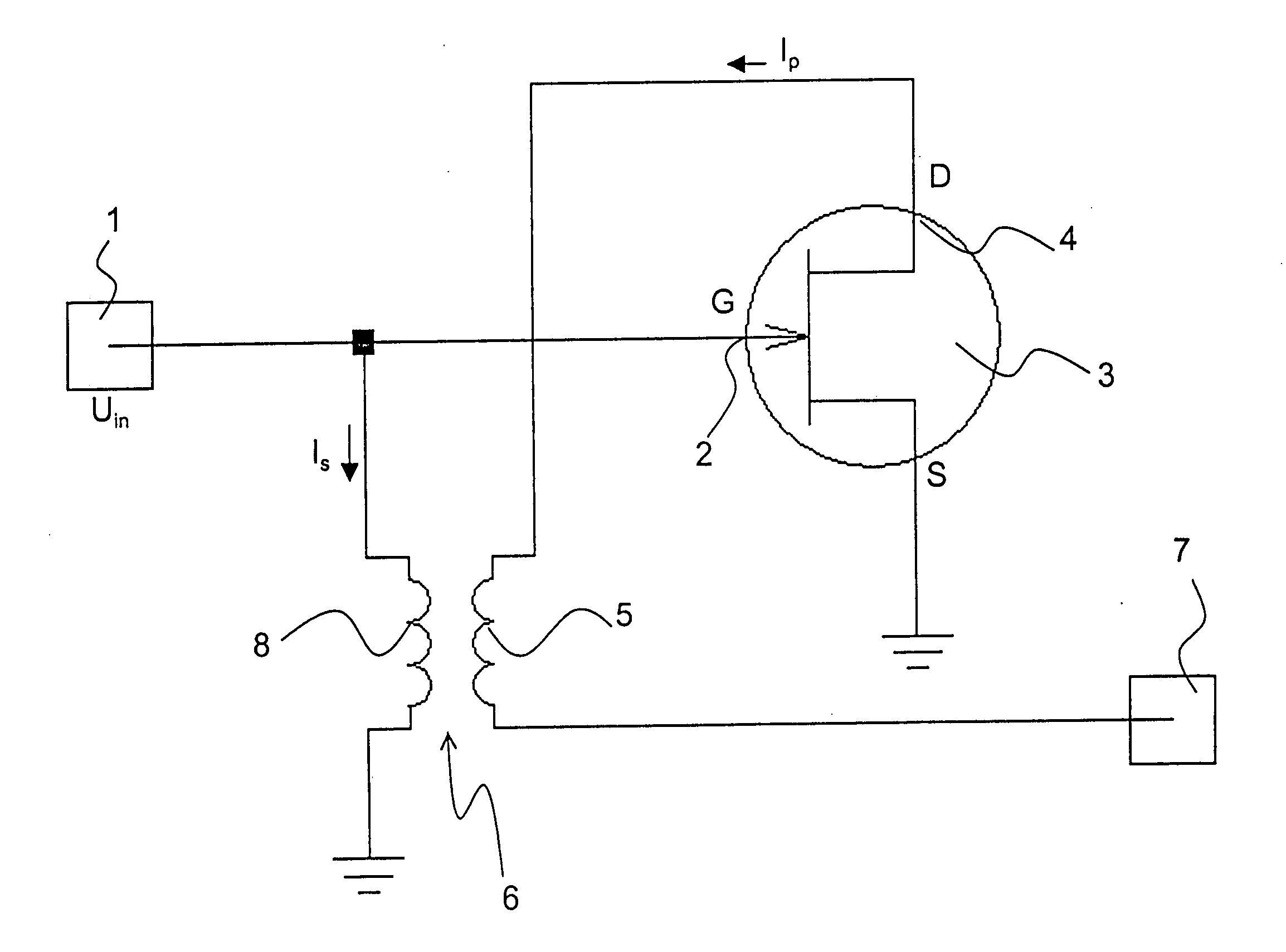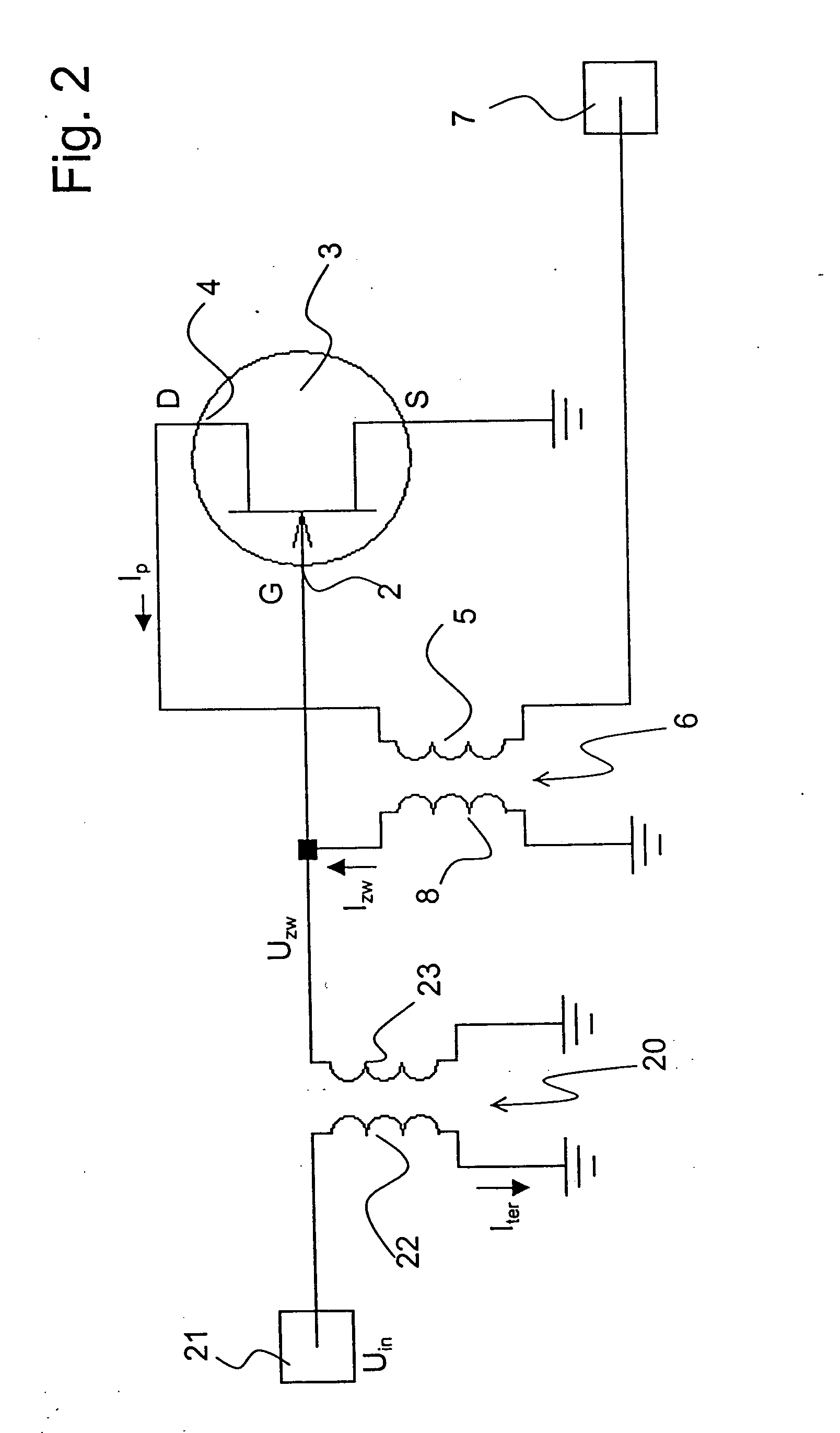Low-noise preamplifier, in particular, for nuclear magnetic resonance (NMR)
a preamplifier and low-noise technology, applied in differential amplifiers, dc-amplifiers with dc-coupled stages, amplifiers, etc., can solve the problems of high noise factor, complex input resistance of gasfet preamplifier arrangement, etc., and achieve the effect of 1.2 db and 1.2 db
- Summary
- Abstract
- Description
- Claims
- Application Information
AI Technical Summary
Benefits of technology
Problems solved by technology
Method used
Image
Examples
Embodiment Construction
[0030]FIG. 1 shows a circuit diagram of a simple embodiment of the inventive preamplifier. This circuit is mainly suited for low frequencies below 100 MHz. An input voltage Uin is applied at an input 1 of the preamplifier. The input 1 of the preamplifier is connected to an input 2 of an amplifying element, namely gate G of a field effect transistor (FET) 3. The source S of the FET is connected to ground. The drain D of the FET 3 forms the output 4 of the amplifying element. The signal at the output 4 of the amplifying element is passed through a primary coil 5 of a first transformer 6 and applied to an output 7 of the preamplifier. A primary current Ip flows in the current line between the output 4 of the amplifying element and the output 7 of the preamplifier.
[0031] The first transformer 6 also has a secondary coil 8. One end thereof is connected to ground and the other end is connected to the input 1 of the preamplifier and to the input 2 of the amplifying element. A secondary cu...
PUM
 Login to View More
Login to View More Abstract
Description
Claims
Application Information
 Login to View More
Login to View More - R&D
- Intellectual Property
- Life Sciences
- Materials
- Tech Scout
- Unparalleled Data Quality
- Higher Quality Content
- 60% Fewer Hallucinations
Browse by: Latest US Patents, China's latest patents, Technical Efficacy Thesaurus, Application Domain, Technology Topic, Popular Technical Reports.
© 2025 PatSnap. All rights reserved.Legal|Privacy policy|Modern Slavery Act Transparency Statement|Sitemap|About US| Contact US: help@patsnap.com



